Question
Who is the husband of
Y? Answer the questions based on the information given below: P, Q, R, A, B, C, Y and Z are sitting around a circle facing the centre but not necessarily in the same order. Each of them has a relationship with P. Y is sitting second to the left of father of P. C is immediate neighbor of P. A, mother of P is sitting opposite to the sister of P. Q is sitting to the immediate right of wife of P. B is sitting to the immediate left of sister of P. B who is a male is sitting second to the right of mother of R. Brother of P is sitting third to right of Q. Daughter of P is sitting to third to right of sister of P. P is sitting second to the right of daughter of B. Y has two children in different genders.Solution
A, mother of P is sitting opposite to the sister of P. 2. Daughter of P is sitting to third to right of sister of P. 3. B is sitting to the immediate left of sister of P. 4. Q is sitting to the immediate right of wife of P. Brother of P is sitting third to right of Q. 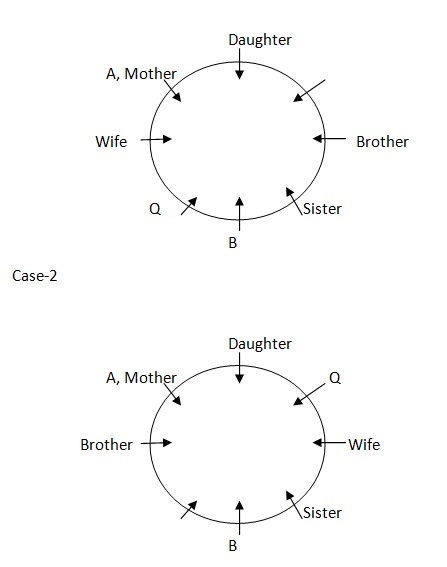 Case-3
Case-3 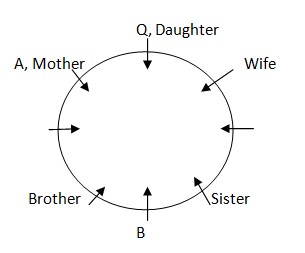 Next we have only 1 position left for placing P in all 3 arrangements as
Next we have only 1 position left for placing P in all 3 arrangements as 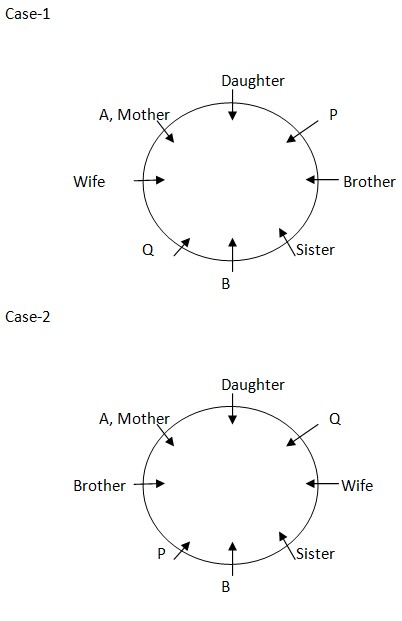 Case-3
Case-3 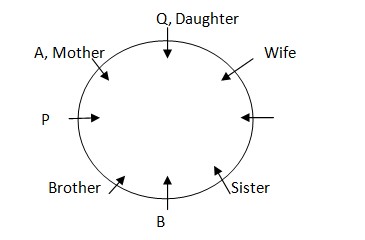 P is sitting second to the right of daughter of B. B who is a male is sitting second to the right of mother of R. Y is sitting second to the left of father of P. C is immediate neighbor of P. Y has two children in different genders. Case-2 & 3 gets rejected as these both cases were not satisfied with 8th statement (as we know P is a male member) In case-1, P’s sister, P’s brother and P’s daughter were seated apart from Q. This implies Q must be son of P and the blood relation is shown below, So final arrangement
P is sitting second to the right of daughter of B. B who is a male is sitting second to the right of mother of R. Y is sitting second to the left of father of P. C is immediate neighbor of P. Y has two children in different genders. Case-2 & 3 gets rejected as these both cases were not satisfied with 8th statement (as we know P is a male member) In case-1, P’s sister, P’s brother and P’s daughter were seated apart from Q. This implies Q must be son of P and the blood relation is shown below, So final arrangement 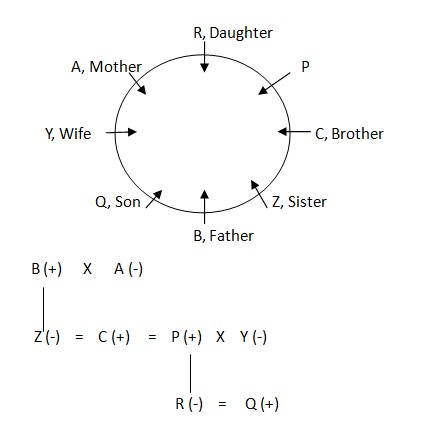
Instrument used for measuring solar radiation is:
The inflorescence of sugarcane is known as:
Which among the following antibiotics is obtained from fungi?
Enzymes are by nature:
Barbara McClintok is associated with
__________is the fraction of water entering the soil that must pass through the root zone in order to prevent soil salinity from exceeding a specified v...
The ratio between C and N crop residue generally ranges between __ ?
Khaira disease of rice is due to
Which color sticky traps are used for aphids and white fly?
Maximum moisture content for safe storage in wheat seed is:
Relevant for Exams:


